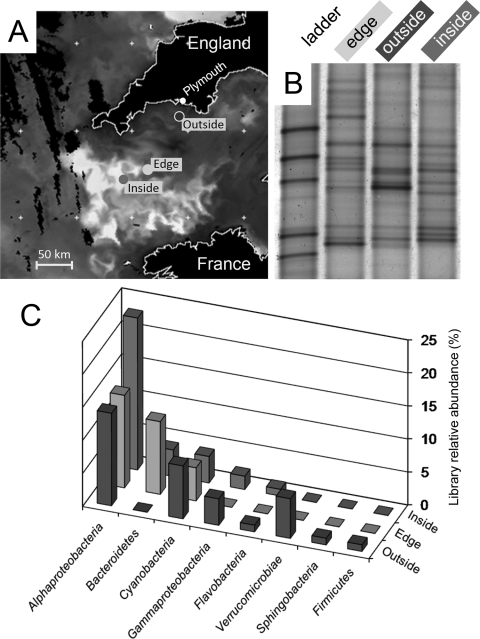FIG. 1.
Physical location and bacterial composition of samples. (A) A grayscale Aqua-MODIS satellite radiance image generated from a mixed-wavelength composite image (551-nm, 488-nm, and 443-nm wavebands) on 26 July 2006. Emiliania huxleyi coccolithophore reflectance is readily visible in this image. A chlorophyll a satellite image from the same day shows chlorophyll abundance corresponding to the Karenia bloom adjacent to the bloom on the north side of the English Channel (image not shown). Satellite data were received and processed by the NERC Earth Observation Data Acquisition and Analysis Service (NEODAAS) at Dundee University and Plymouth Marine Laboratory (www.neodaas.ac.uk). (B) Bacterial DGGE fingerprints of samples taken from the locations indicated in panel A. (C) Frequency of 16S rRNA gene clones belonging to major phylogenetic groups across the different gene libraries analyzed.

